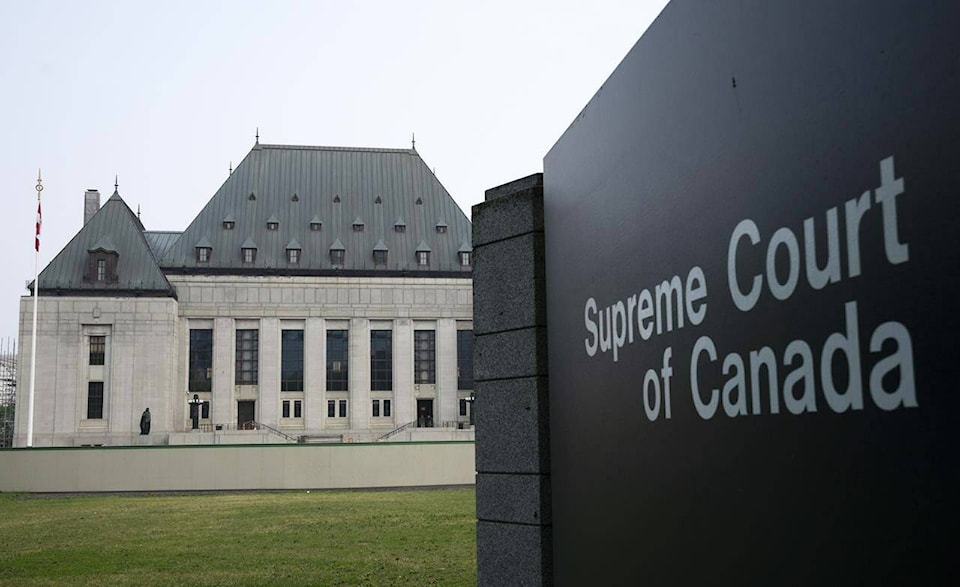Canada���߲��о����s highest court has ruled on a case that began in the Vuntut Gwitchin traditional territory of the Northern Yukon, but that will surely impact the lawmaking authority of First Nations across the country. The split decision issued by the Supreme Court of Canada on March 28 denied at least some of what was being argued by both sides but ultimately upheld the force of the Charter of Rights of Freedoms section that protects the collective rights of Indigenous groups.
The case of Cindy Dickson v. Vuntut Gwitchin First Nation (VGFN) was launched in 2019 and has progressed through the Yukon courts on its way to the Supreme Court of Canada since then.
It was prompted by Dickson���߲��о����s challenge of VGFN���߲��о����s requirement that its elected leaders reside on the First Nation���߲��о����s settlement land in the Northern Yukon. Dickson had her nomination papers rejected when she tried to run for office because she resided in Whitehorse, a residence location she informed the court was essential due to her son���߲��о����s health concerns. VGFN has been self-governing since the early 1990s and the residency requirement is written into its constitution.
The July 2021 decision that came out of the Yukon Court of Appeal held that Dickson���߲��о����s rights had been breached but that VGFN���߲��о����s residency requirement is shielded by Section 25 of the charter and so is legal.
The Supreme Court of Canada heard the case last February. Following the result in the Yukon Court of Appeal, the highest court was considering both Dickson���߲��о����s appeal and a cross appeal from VGFN. Dickson maintains the unconstitutionality of the residency requirement based on Section 15 (1) of the charter, while VGFN is appealing for a ruling on whether the charter can apply to its constitution at all.
Seven Supreme Court Justices heard the case: Chief Justice Richard Wagner and Justices Suzanne Côté, Malcolm Rowe, Michelle O���߲��о����Bonsawin, Nicholas Kasirer, Sheilah Martin and Mahmud Jamal.
The court���߲��о����s decision ultimately denied Dickson���߲��о����s appeal on the same basis that the lower court did. It also found that the charter does apply to the VGFN constitution. These outcomes were affirmed in the majority decision written by Kasirer and Jamal and concurred with by Wagner and Côté.
The majority ruled that while Dickson���߲��о����s Section 15 right to protection from discrimination was breached by the residency requirement, proper application of Section 25 makes the practice allowable. The judgement describes Section 25���߲��о����s ability to act as a ���߲��о����counterweight���߲��о���� when individual rights conflict with Indigenous rights that protect ���߲��о����Indigenous Difference���߲��о���� as ���߲��о����a social and constitutional good for all Canadians.���߲��о����
This ruling also set aside VGFN���߲��о����s cross appeal, arguing that the charter does not apply to the self-governing First Nation���߲��о����s constitution.
The 4-3 majority formed the court���߲��о����s ruling, but the justices who were outvoted wrote dissents explaining their views.
Justices Martin and O���߲��о����Bonsawin found that the residency requirement breached Dickson���߲��о����s rights and were not satisfied that it could be protected by Section 25. They based this on the residency requirement���߲��о����s role as an ���߲��о����internal regulation���߲��о���� that is ���߲��о����not aimed at recognizing the special status of Indigenous collectives within the broader Canadian State.���߲��о����
Rowe was the sole justice who found that the charter should not apply to the VGFN constitution. This interpretation was based on whether Section 32 of the charter, which mandates that the federal, provincial and territorial governments must respect the rights guaranteed to Canadians, can be applied to other forms of government. Rowe writes that Section 32 was designed by and for federal and provincial governments and that Indigenous governance was dealt with elsewhere in the Constitution Act and, notably, outside the charter. He finds the application of Section 32 to ���߲��о����any entity or activity that can be termed a government or governmental���߲��о���� untenable.
���߲��о����The idea of self-government is not that it is an ���߲��о����authority [that] flows from Parliament,���߲��о���� but rather Indigenous peoples exercising authority that is rightfully theirs,���߲��о���� Rowe writes.
Broad interest in the case is demonstrated by the fact that 14 outside groups were granted intervener status. They included the Yukon government, the attorney general offices of Canada and some provinces, the Council of Yukon First Nations, the Carcross/Tagish First Nation and the Teslin Tlingit Council.
While the decision did not completely align with their arguments, it was greeted favourably by VGFN.
���߲��о����The Court upheld and protected the responsibility for Vuntut Gwitchin leaders elected to Council to live within our Traditional Territory in the community of Old Crow, which is the seat of our government. This responsibility was established in our Constitution by the deliberation and consensus decision of our General Assembly, and was based on the guidance of our Elders and their knowledge,���߲��о���� a statement posted to the First Nation���߲��о����s website reads.
���߲��о����Today���߲��о����s Supreme Court decision demonstrates respect for and deference to our First Nation���߲��о����s inherent right to govern ourselves collectively in accordance with our Constitution, laws, values, and our special relationship to our Traditional Territory. This inherent right is affirmed in our modern treaty and self-government agreements with the Governments of Canada and Yukon, and we will continue to implement this together to meet evolving circumstances and needs of our Citizens,���߲��о���� said Pauline Frost, VGFN���߲��о����s chief.
���߲��о����With files from Jackie Hong
Contact Jim Elliot at jim.elliot@yukon-news.com



